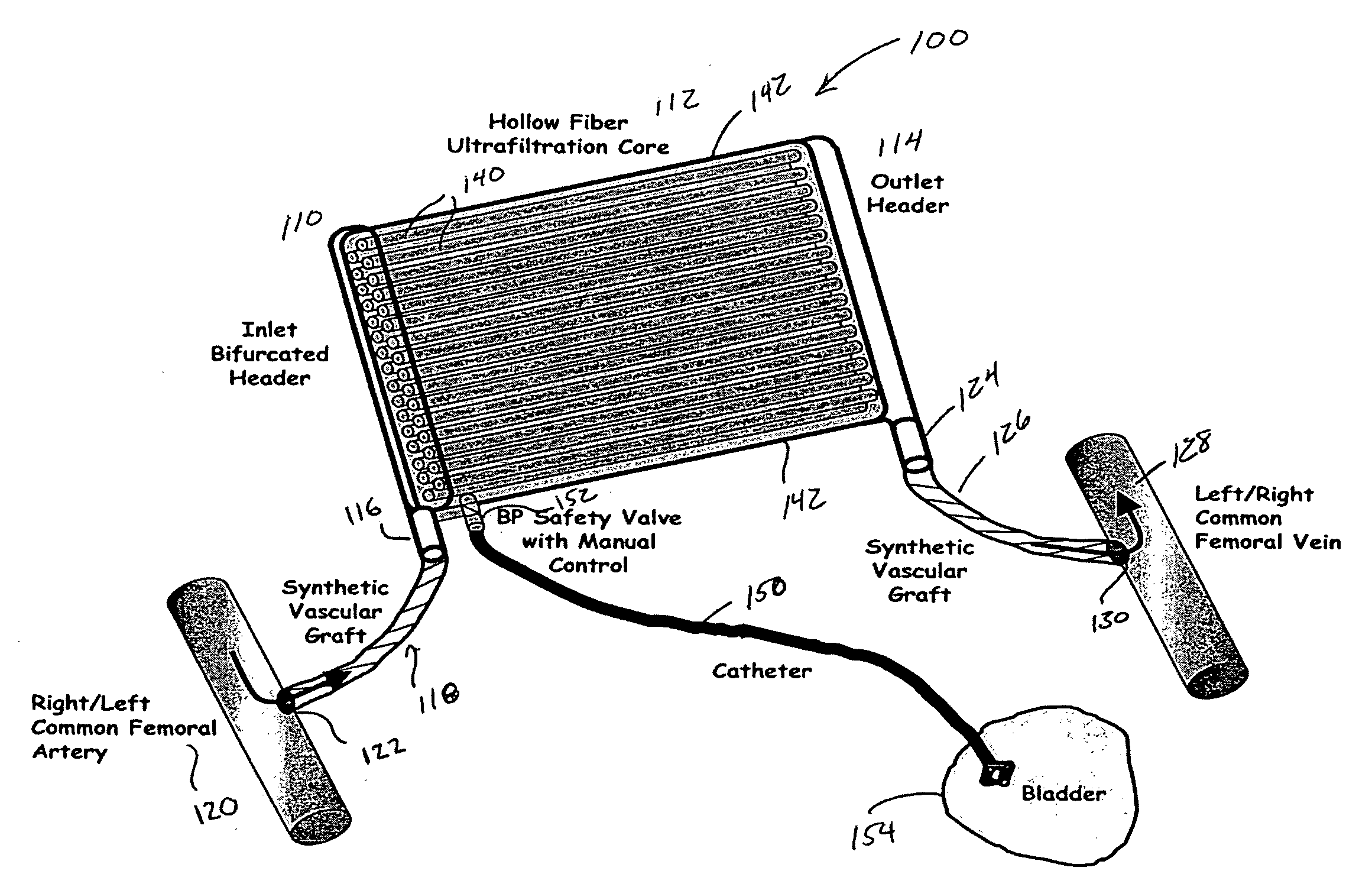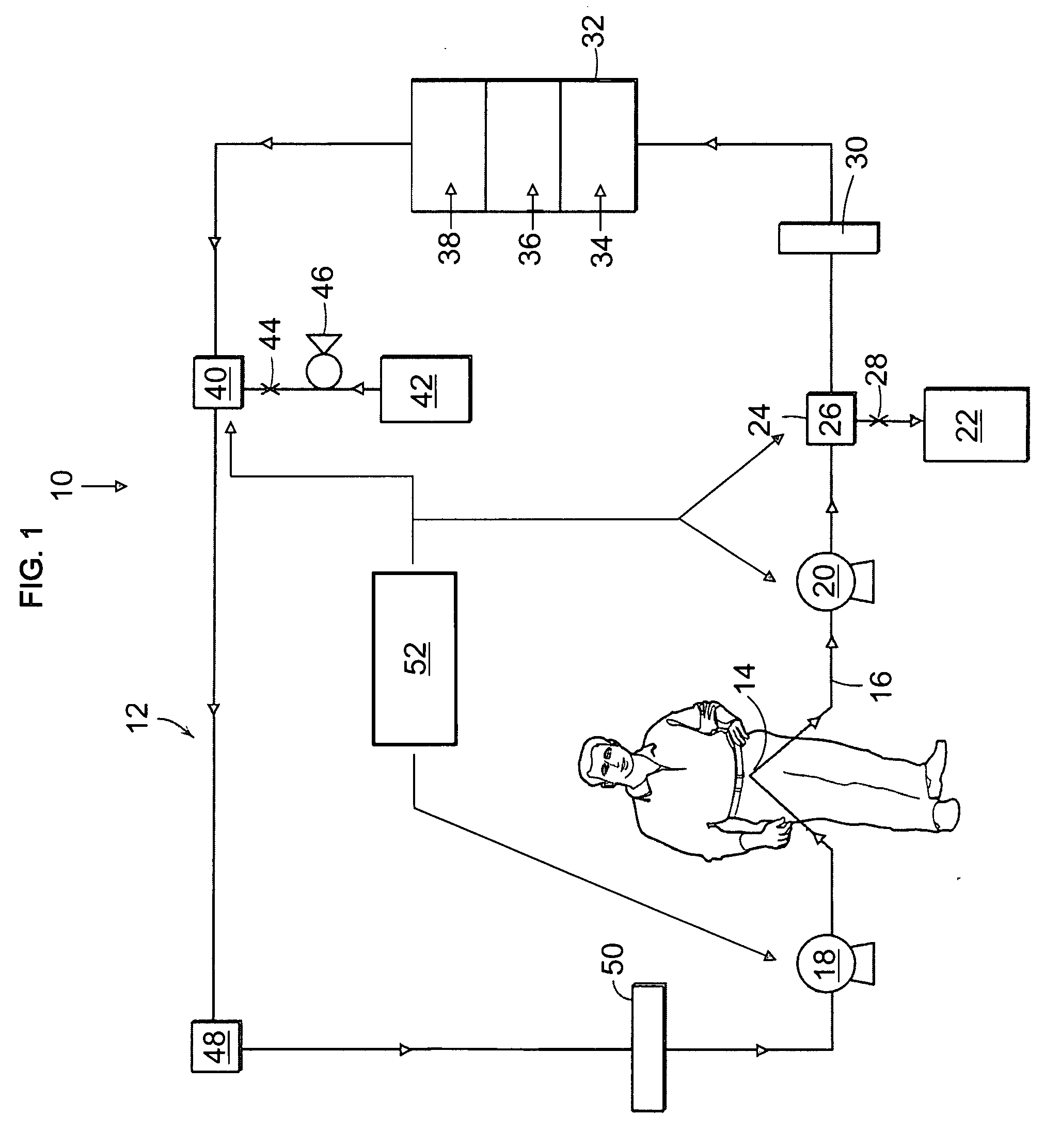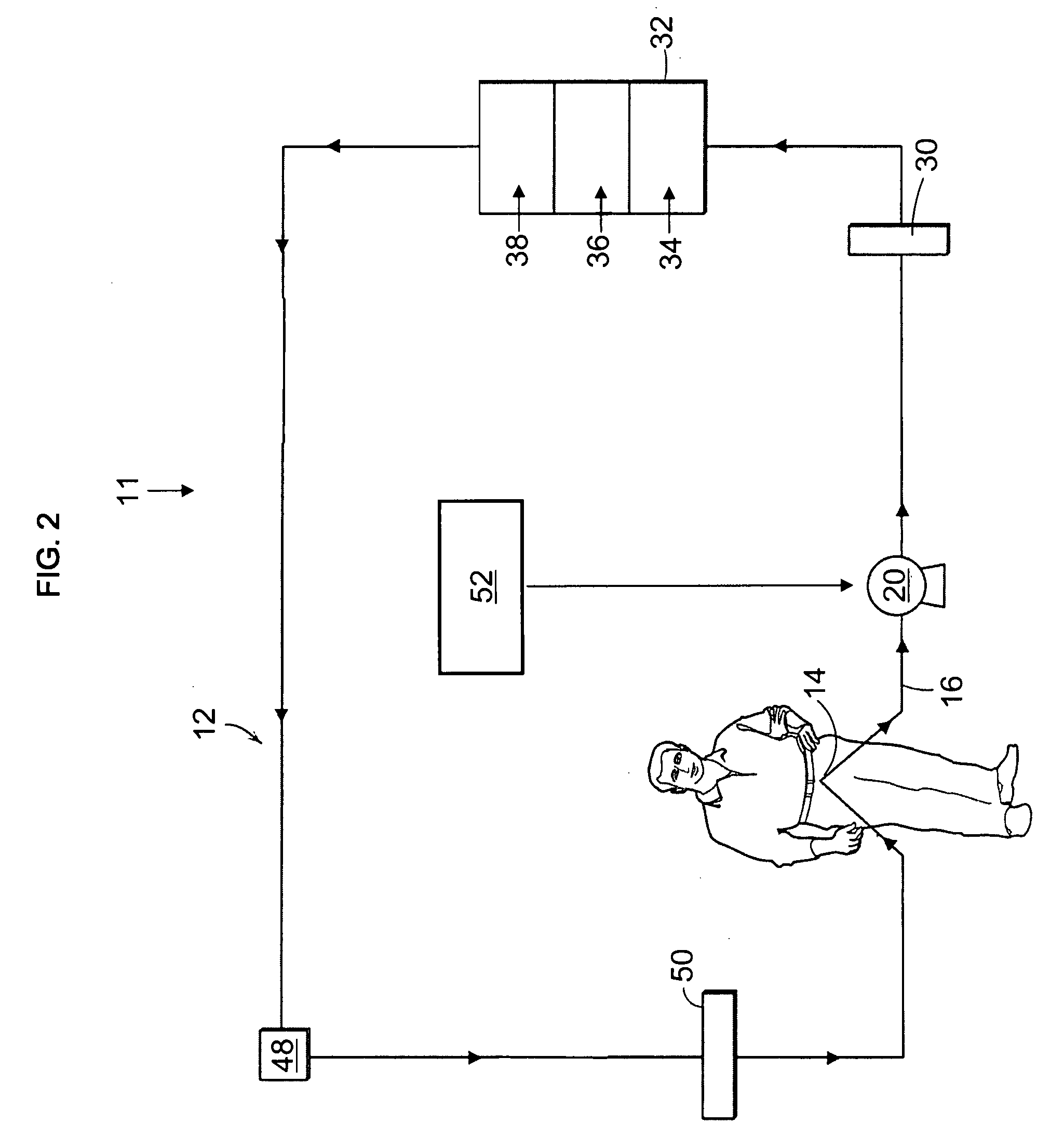Artificial kidney dialysis system
a technology of kidney dialysis and artificial kidney, which is applied in the field of artificial kidney dialysis system, can solve the problems of reducing the autonomy and quality of life of patients, reducing the amount of peritoneal dialysis fluid that must be incorporated into the wearable peritoneal dialysis device, and reducing the patient's autonomy. the effect of comfor
- Summary
- Abstract
- Description
- Claims
- Application Information
AI Technical Summary
Benefits of technology
Problems solved by technology
Method used
Image
Examples
example
[0095] A GE Sepa™ lab scale crossflow membrane filtration unit was modified to enable the testing of membranes in a countercurrent diffusion mode. The unit was equipped with a Neosepta AFX-A0100 membrane. Peritoneal dialysis solution (1000 ml) spiked with 1.5 grams of urea was pumped across one side of the membrane. Deionized water (1000 ml) was circulated through the other side of the membrane and through a FMC-NA F6 dialysis cartridge (in which the hollow fibers were infused with a solution of washed urease). The deionized water was also pumped through 3 small cartridges containing ion exchange resins (two filled with Dowex 1 (OH) and one filled with a high capacity strong acid ion exchange resin from Rohm and Haas). It was found necessary to thoroughly wash the strong acid cation exchange resin, or material that leached from it deactivated the urease. Samples were removed periodically from both fluid loops and analyzed for calcium, magnesium, glucose, BUN, pH, and ammonia.
[0096]...
PUM
 Login to View More
Login to View More Abstract
Description
Claims
Application Information
 Login to View More
Login to View More - R&D
- Intellectual Property
- Life Sciences
- Materials
- Tech Scout
- Unparalleled Data Quality
- Higher Quality Content
- 60% Fewer Hallucinations
Browse by: Latest US Patents, China's latest patents, Technical Efficacy Thesaurus, Application Domain, Technology Topic, Popular Technical Reports.
© 2025 PatSnap. All rights reserved.Legal|Privacy policy|Modern Slavery Act Transparency Statement|Sitemap|About US| Contact US: help@patsnap.com



